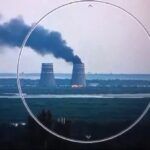Security at Y-12 nun too good
By Fissile Materials Working Group | October 2, 2012
In the early hours of July 28, Megan Rice, the now-famous 82-year-old nun and activist, and her accomplices — Greg Boertje-Obed, a 57-year-old housepainter and veteran, and Michael Walli, a 63-year-old gardener — broke into the Fort Knox of nuclear facilities: the Y-12 National Security Complex, which houses 300 to 400 metric tons of bomb-grade uranium. The three activists knew they were risking their lives by breaking into the facility; the guards at Y-12 are sanctioned to use deadly force on trespassers. But, as Rice told the Project on Government Oversight, the threesome never really believed they would make it past the first “PIDAS” (perimeter intrusion detection and assessment system) fence, which they assumed was probably electrified. It wasn’t. The activists used bolt cutters to get through three fences surrounding the complex completely un-noticed. Finally, around 4:30 a.m., Y-12 guards responded to what they thought was a maintenance crew banging on the walls.
When Kirk Garland, the first guard on the scene, arrived at the “HEUMF” (highly enriched uranium materials facility), he found the three protesters outside the facility — within 20 feet of nuclear material. The activists were banging on the walls with hammers, after first hanging a few banners, splashing some fake blood around, and painting Bible verses on the facade. Although their intentions were peaceful, the fact that three ordinary people were able to get so close to the most dangerous material on the planet is cause for serious concern.
And so, it was with no small amount of curiosity that the nuclear security community was finally able to read through the findings of the Energy Department Office of Inspector General’s investigation into the breach. Unsurprisingly, the Energy Department found “troubling displays of ineptitude in responding to alarms, failures to maintain critical security equipment, over reliance on compensatory measures, misunderstanding of security protocols, poor communications, and weaknesses in contract and resource management.”
Among the many vexing deficiencies in this report were the numerous inoperable security cameras. Indeed, the camera that should have provided coverage of the activists’ point of entry had been out of service for six months; yet, in a 2011 performance evaluation, the National Nuclear Security Administration (NNSA) determined that the facility’s security was “excellent” and “good.” It’s hard to imagine how the NNSA came to this conclusion given that there hadn’t been a full force-on-force test of the facility since 2009. A force-on-force exercise is designed to fully measure a nuclear facility’s preparedness against attack; it’s the only real way to tell whether a site can protect the material it houses.
Thanks to the break-in, the Energy Department’s Office of Independent Oversight Program is finally conducting a full security review, including a force-on-force test — at Y-12 and at every Category I location. However, there is still concern among security experts that the Independent Oversight Program will be pressured to dumb down the tests to avoid further negative attention.
Still, Energy Secretary Steven Chu has said, “The department has no tolerance for security breaches at any of our sites, and I am committed to ensure that those responsible will be held accountable.” Those responsible are the security contractors — Babcock & Wilcox Technical Services Y-12 and Wackenhut Services, Inc. in Oak Ridge — who knowingly allowed the security at Y-12 to fall far below acceptable levels. Yet it took over two months for either company to be held accountable in any discernable way. On September 28, Babcock & Wilcox announced its plans to terminate its contract with Wackenhut Services. The NNSA issued a “show cause letter” to Babcock & Wilcox Technical Services Y-12, but has granted them an additional 30 days to demonstrate why they shouldn’t also be fired. These are good first steps, but the contractors are not the only parties responsible. Of course, someone else is equally at fault: Secretary Chu himself.
Chu has developed a federal hands-off-the-contractor culture at the Energy Department. This mentality was first demonstrated by Deputy Secretary Daniel Poneman in a memo that put forth a safety and security plan for the Energy Department: “Contractors are provided the flexibility to tailor and implement security programs in light of their situation and to develop corresponding risk-and performance-based protection strategies without excessive Federal oversight or overly-prescriptive Departmental requirements.”
The obvious problems that result from so much contractor freedom are made clear by the recent inspector general report, which determined that this lack of federal oversight at least partially contributed to the success of the break-in: “When questioned as to why action was not taken to address growing maintenance backlogs, Federal officials told us that with the advent of NNSA’s contractor governance system (Contractor Assurance System), they could no longer intervene.” In light of these findings, the inspector general had serious questions about the Energy Department’s overall approach and determined that “current initiatives to reduce Federal oversight of the nuclear weapons complex, especially as they relate to security functions, need to be carefully considered.”
Astonishingly, the only person who was fired after the debacle was one low-level guard: Kirk Garland — the first to apprehend the activists. Aside from the fact that Garland clearly had nothing to do with the egregious failures of cameras and other security measures, he also acted with real bravery. Had this been an actual terrorist attack, Garland likely would have been killed instantly by the assailants. Yet, for his risk-taking, Garland was handed a pink slip.
Garland had 30 years of experience at nuclear weapons sites, including 21 years at Rocky Flats and Pantex. Although other Y-12 employees were reassigned or allowed to retire, Garland was fired — allegedly for turning his back on the activists. However, in a Project On Government Oversight phone interview, Garland said that he didn’t recall doing so. Moreover, in a separate interview with Megan Rice, the activist nun confirmed that she never saw Garland take his eyes off her or the other protesters.
Besides, sacking a single guard will hardly fix the underlying problems at Y-12. The new security contractors themselves must be thoroughly vetted and, once on the job, a watchful eye must be kept over them. Fortunately, this is an issue that Congress is starting to take seriously. On September 12, the Energy and Commerce Committee questioned the officials in charge of Y-12 security. Each member of the bipartisan Oversight and Investigation subcommittee agreed that the break-in was appalling and that more federal oversight was necessary.
“By all accounts, contractor and site managers’ failures at Y-12 allowed one of the most serious security breakdowns in the history of the weapons complex,” said California Democrat Representative Henry Waxman at the hearing. “The ineptness and negligence is mind-boggling,” agreed Tennessee Republican Representative Marsha Blackburn.
It is important that these security concerns are taken seriously and thoroughly resolved. As the country that possesses the second-largest stockpile of fissile material in the world, the United States must ensure that security at its nuclear facilities acts as an example to other counties — not as a warning.
Editor’s note: This column was written by Peter Stockton, a senior investigator at the Project On Government Oversight (POGO), and Lydia Dennett, a research associate at POGO. Both writers are members of the Fissile Materials Working Group. This article was updated on October 3, 2012, to add new information on the security contractors.
Together, we make the world safer.
The Bulletin elevates expert voices above the noise. But as an independent nonprofit organization, our operations depend on the support of readers like you. Help us continue to deliver quality journalism that holds leaders accountable. Your support of our work at any level is important. In return, we promise our coverage will be understandable, influential, vigilant, solution-oriented, and fair-minded. Together we can make a difference.
Topics: Columnists, Nuclear Energy















